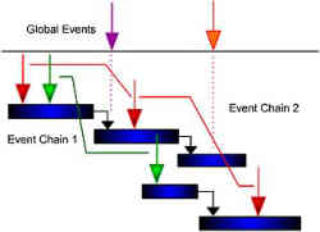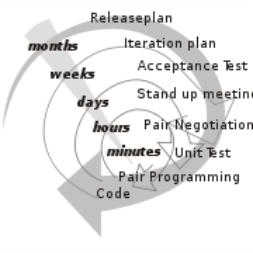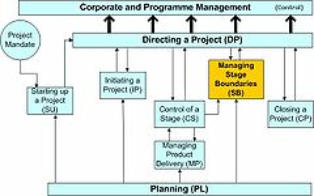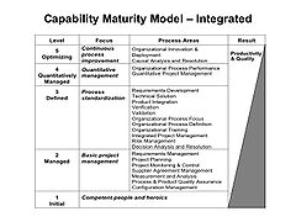



Welcome to your Total IT Support Provider


Copyright 2017 DTM Consultants Inc.
Project management
DTM Consultants has experts ready to assist your company with its project management needs, we tailor our approach to your project management issues based on your company's needs. Below are some of the basic project management approaches we specialize in. We analyze your business requirements and custom design the methodology to best fit your time line and outcome. Call today and talk with one of our Project Managers about your needs. There are a number of approaches to managing project activities including agile, interactive, incremental, and phased approaches. Regardless of the methodology employed, careful consideration must be given to the overall project objectives, time line, and cost, as well as the roles and responsibilities of all participants and stakeholders. The Traditional Approach A traditional phased approach identifies a sequence of steps to be completed. In the "traditional approach", we can distinguish 5 components of a project (4 stages plus control) in the development of a project. Typical development phases of a project. • Project initiation stage. • Project planning or design stage. • Project execution or production stage. • Project monitoring and Debug / Control. • Project completion stage. Not all the projects will visit every stage, as projects can be terminated before they reach completion. Some projects do not follow a structured planning and/or monitoring stages. Some projects will go through steps 2, 3 and 4 multiple times. Many industries use variations on these project stages. For example, when working on a brick and mortar design and construction, projects will typically progress through stages like Pre-Planning, Conceptual Design, Schematic Design, Design Development, Construction Drawings (or Contract Documents), and Construction Administration. In software development, this approach is often known as the waterfall model , i.e., one series of tasks after another in linear sequence. In software development many organizations have adapted the Rational Unified Process (RUP) to fit this methodology, although RUP does not require or explicitly recommend this practice. Waterfall development works well for small, well defined projects, but often fails in larger projects of undefined and ambiguous nature. The Cone of Uncertainty explains some of this as the planning made on the initial phase of the project suffers from a high degree of uncertainty. This becomes especially true as software development is often the realization of a new or novel product. In projects where requirements have not been finalized and can change, requirements management is used to develop an accurate and complete definition of the behavior of software that can serve as the basis for software development. While the terms may differ from industry to industry, the actual stages typically follow common steps to problem solving which are defining the problem, weighing options, choosing a path, implementation and evaluation. Critical Chain Project Management Critical Chain Project Management (CCPM) is a method of planning and managing projects that puts more emphasis on the resources (physical and human) needed in order to execute project tasks. It is an application of the Theory of Constraints (TOC) to projects. The goal is to increase the rate of throughput (or completion rates) of projects in an organization. Applying the first three of the five focusing steps of TOC, the system constraint for all projects is identified as are the resources. To exploit the constraint, tasks on the critical chain are given priority over all other activities. Finally, projects are planned and managed to ensure that the resources are ready when the critical chain tasks must start, subordinating all other resources to the critical chain. Regardless of project type, the project plan should undergo Resource Leveling, and the longest sequence of resource-constrained tasks should be identified as the critical chain. In multi-project environments, resource leveling should be performed across projects. However, it is often enough to identify (or simply select) a single "drum" resource—a resource that acts as a constraint across projects—and stagger projects based on the availability of that single resource. Extreme Project Management In critical studies of Project Management, it has been noted that several of these fundamentally PERT-based models are not well suited for the multi-project company environment of today. citation needed] Most of them are aimed at very large-scale, one-time, non-routine projects, and nowadays all kinds of management are expressed in terms of projects. Using complex models for "projects" (or rather "tasks") spanning a few weeks has been proven to cause unnecessary costs and low maneuverability in several cases citation needed]. Instead, project management experts try to identify different "lightweight" models, such as Agile Project Management methods including Extreme Programming for software development and Scrum techniques. The generalization of Extreme Programming to other kinds of projects is extreme project management, which may be used in combination with the process modeling and management principles of human interaction management. Event Chain Methodology Event chain methodology is another method that complements critical path method and critical chain project management methodologies. Event chain methodology is an uncertainty modeling and schedule network analysis technique that is focused on identifying and managing events and event chains that affect project schedules. Event chain methodology helps to mitigate the negative impact of psychological heuristics and biases, as well as to allow for easy modeling of uncertainties in the project schedules. Event chain methodology is based on the following principles. Probabilistic moment of risk: An activity (task) in most real life processes is not a continuous uniform process. Tasks are affected by external events, which can occur at some point in the middle of the task. Event chains: Events can cause other events, which will create event chains. These event chains can significantly affect the course of the project. Quantitative analysis is used to determine a cumulative effect of these event chains on the project schedule. Critical events or event chains: The single events or the event chains that have the most potential to affect the projects are the “critical events” or “critical chains of events.” They can be determined by the analysis. Project tracking with events: Even if a project is partially completed and data about the project duration, cost, and events occurred is available, it is still possible to refine information about future potential events and helps to forecast future project performance. Event chain visualization: Events and event chains can be visualized using event chain diagrams on a Gantt chart PRINCE2 The PRINCE2 is a structured approach to project management, released in 1996 as a generic project management method.[18] It combined the original PROMPT methodology (which evolved into the PRINCE methodology) with IBM's MITP (managing the implementation of the total project) methodology. PRINCE2 provides a method for managing projects within a clearly defined framework. PRINCE2 describes procedures to coordinate people and activities in a project, how to design and supervise the project, and what to do if the project has to be adjusted if it does not develop as planned. In the method, each process is specified with its key inputs and outputs and with specific goals and activities to be carried out. This allows for automatic control of any deviations from the plan. Divided into manageable stages, the method enables an efficient control of resources. On the basis of close monitoring, the project can be carried out in a controlled and organized way. PRINCE2 provides a common language for all participants in the project. The various management roles and responsibilities involved in a project are fully described and are adaptable to suit the complexity of the project and skills of the organization. Process-Based Management Capability Maturity Model, predecessor of the CMMI Model. Also furthering the concept of project control is the incorporation of process-based management. This area has been driven by the use of Maturity models such as the CMMI (Capability Maturity Model Integration) and ISO/IEC15504 (SPICE - Software Process Improvement and Capability Estimation). Agile Project Management approaches based on the principles of human interaction management are founded on a process view of human collaboration. This contrasts sharply with the traditional approach. In the agile software development or flexible product development approach, the project is seen as a series of relatively small tasks conceived and executed as the situation demands in an adaptive manner, rather than as a completely pre-planned process.DTM Consultants Inc.
IT Support for Small Business







Welcome to your Total IT Support Provider


Copyright 2017 DTM Consultants Inc.












































